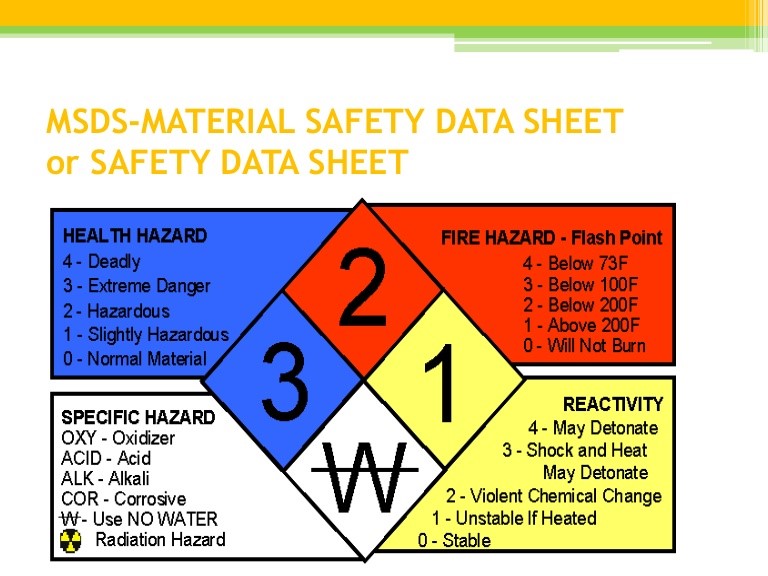An MSDS is a chemical safety index (MSDS stand for the Material Safety Data Sheet), is a form of document containing data related to the properties of a particular chemical. It is intended for those who need to be in contact with or work with the chemical, whether long-term or short-term sequences to work with it safely or the necessary dispositions when affected. its.
MSDSs are often applied to items that may pose a risk to transportation such as explosions, corrosive chemicals, smelly goods … MSDSs are used to guide the carrier to carry out safety procedures. all goods in the process of loading, or handling when there is a problem.
Although functional foods, cosmetics or powdered foods are not dangerous chemicals, but when transporting goods by air to the International, aviation security at the airport requires security signs. MSDS to check whether the ingredients in the signage are really safe for consumers in direct or indirect contact or not.
From September 1, 2015, Tan Son Nhat and Noi Bai aviation security regulate all items other than chemicals, impurities, food, functional foods and cosmetics in the form of cream, liquid, powder, and water. MSDS Safety Data Sheet is required. Only when the customer provides sufficient documents, the shipment can be exported out of Vietnam, there will be no exceptions without MSDS safety signs that the goods are exported through the International courier companies such as DHL, FedEx, TNT & UPS in Vietnam.

So who will be the one provide MSDS?
MSDS will be provided by shipper (sender can be manufacturing company, distributor – trading company, individual …) for declaration. A complete MSDS requires precision from product information, designation to ingredients, boiling point, explosion temperature, and the form permitted to be transported (by air or sea).
An MSDS should include a log from the manufacturing company or distribution company, or the sender with a legal role. That is why a fake MSDS (information on MSDS does not match information printed on products) will be sanctioned in accordance with the Law. Shipments with MSDS will be sent from shipping agents, then via DHL, FedEx, TNT, UPS, followed by Aviation Security Customs will be responsible for physical inspection of MSDS and goods. If wrong, the sender will take full responsibility: The shipment will be detained, required to make a record, pay a fine after which the goods can be returned or can be canceled.
What includes in MSDS ?
A chemical safety indication (MSDS) must include at least the following:
– Trade name, chemical name and other names as well as CAS registration numbers, RTECS etc.
Physical properties of chemicals such as appearance, color, taste, density, melting point, boiling point, ignition point, explosion point, ignition point, viscosity, rate Evaporation, vapor pressure, percentage permissible in air, solubility in solvents such as water, organic solvents etc.
– Chemical composition, chemical family, formulation and chemical reactions with other chemicals such as acids, oxidizing agents.
Toxicity and adverse effects on human health, such as adversely affecting the eyes, skin, respiratory system, digestive system, fertility as well as the ability to cause cancer or mutation or mutation genes. Symptoms of acute and chronic poisoning.
– Main hazards of fire and explosion, adverse health effects on workers and danger of reaction, for example according to the NFPA rating range 0 to 4.
Safety equipment to use when working with chemicals.
– Working process when working with chemicals.
– Get emergency medical help for poisoning or having an accident while using chemicals.
Standard conditions for storing and storing chemicals in storage (temperature, humidity, ventilation, incompatible chemicals, etc.) as well as conditions to be observed when exposed to chemicals.
– Method of treating waste containing that chemical as well as treating the treasure periodically or when chemicals leak out into the environment.
– Equipment, means and order and standards in fire prevention and fighting.
– Adverse effects on aquatic organisms and the environment.
– Possibility and bioaccumulation coefficient (BCF).
– Regulations on packing, marking and shipping.

